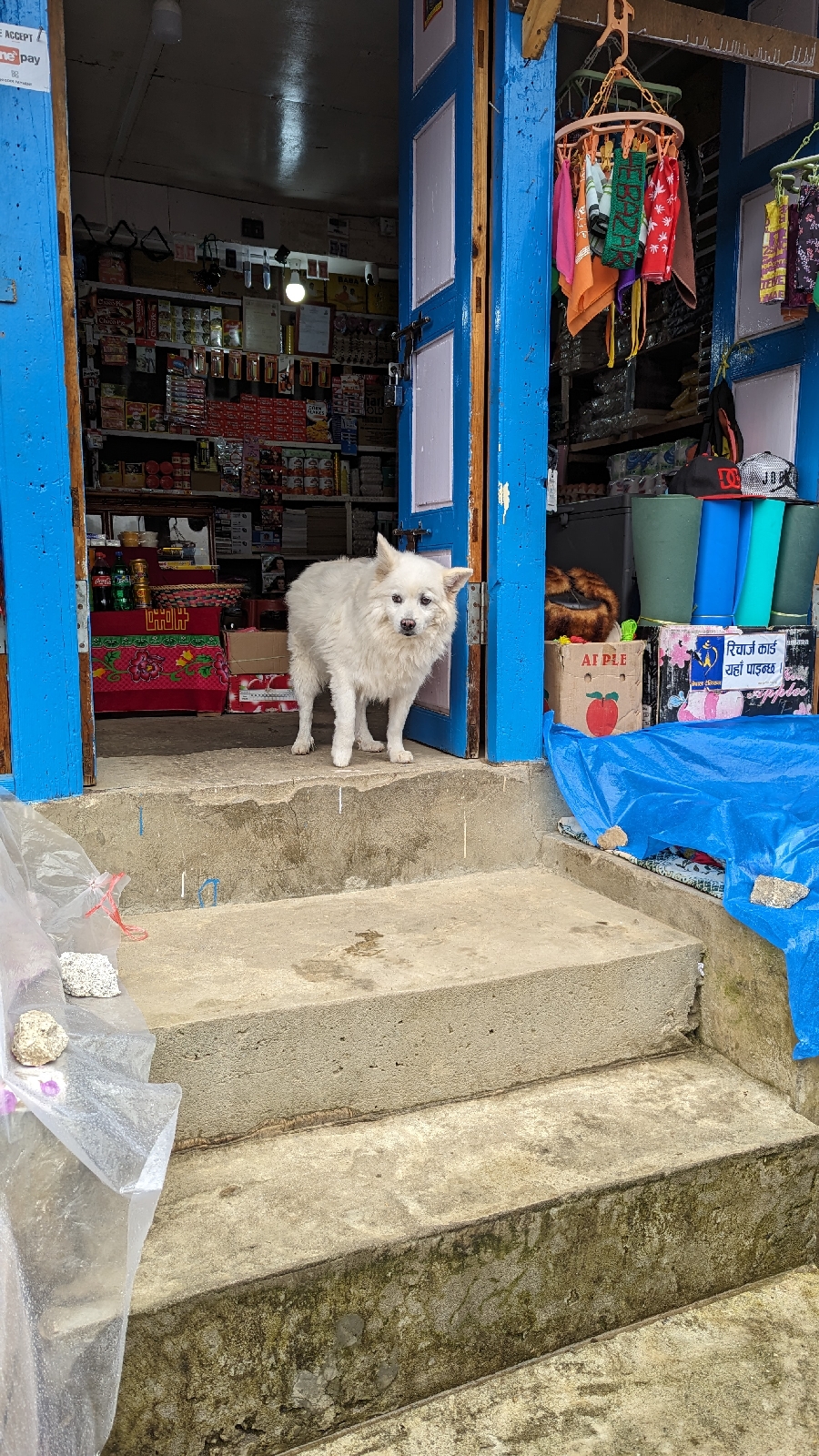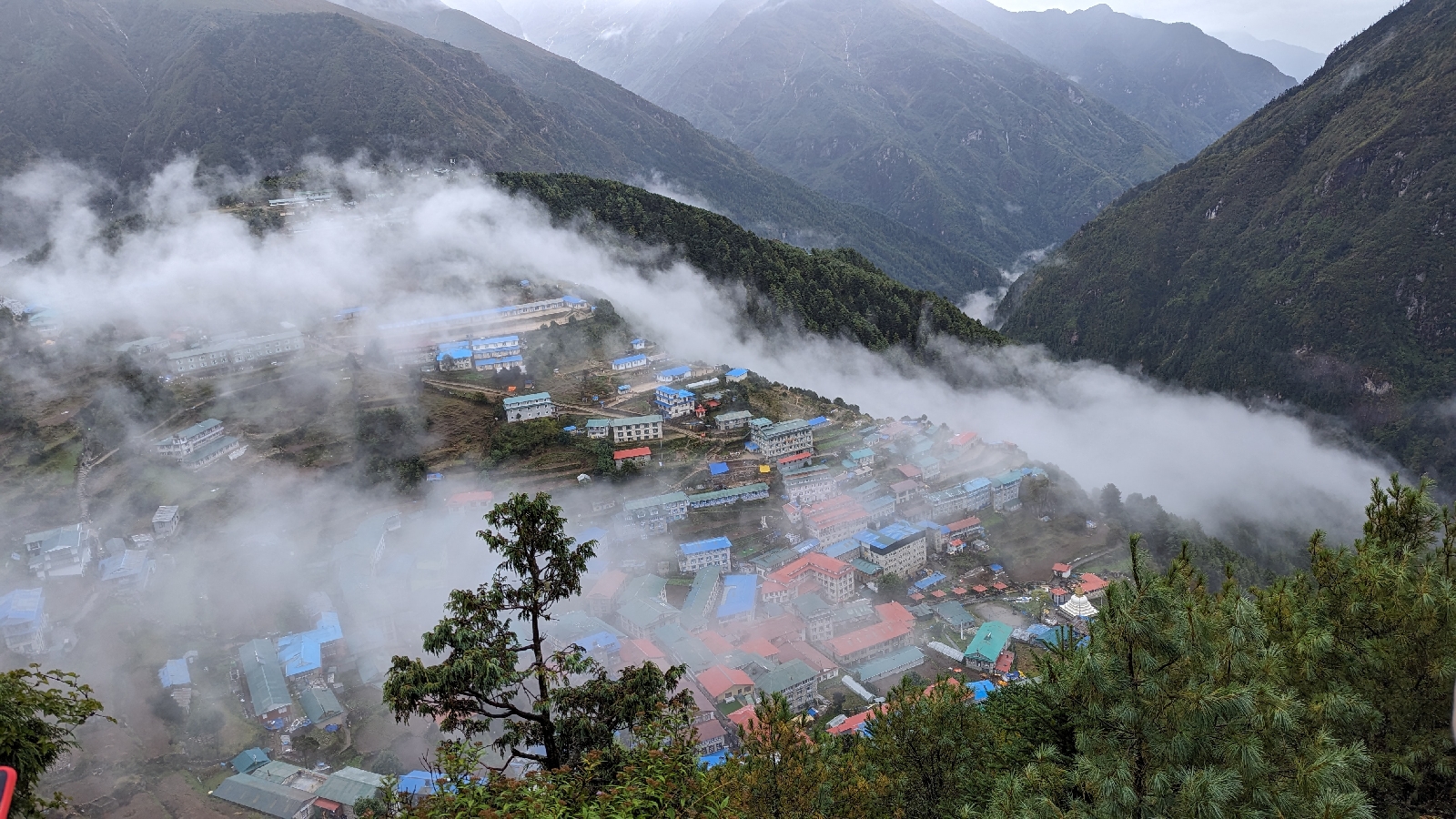Our adventure through Nepal continues to unfold with each passing day, and it's safe to say that we've been greeted with a delightful array of surprises and experiences. Last night, our evening concluded with a meeting that left us all captivated. We had the pleasure of meeting a distinguished researcher named Mahesh Kumar Karki, a published author who is currently working on a book that promises to provide fascinating insights into the diverse cultures of Nepal.
Mahesh Kumar Karki is a firm believer in the power of interesting facts, and he shared his philosophy with us. He's on a mission to introduce readers to the rich tapestry of cultures that call the Nepali valley home. Our discussion with him centered around the Sherpa culture and lifestyle. He also shed light on the meaning behind the painted rocks adorned with scripture that we've encountered on our journey. These rocks serve as places of meditation, and they signify the sacredness of the mountains that surround us.
One crucial takeaway from our conversation was the significance of language in Nepal. In a country with a multitude of languages, it's essential for everyone to learn the local language, fostering communication and connection. Mahesh Kumar Karki and his family live 100 kilometers away from our current location, which for locals, constitutes a two-day walk. To end our unforgettable evening, he graciously signed copies of his book for each of us, leaving us inspired and eager to dive deeper into the cultural mosaic of Nepal.
From Tok Tok to Namche: Trekking with Energy and Enthusiasm
Following a night of restorative sleep, we awoke with renewed energy and excitement for the adventures that awaited us. Our day began with a hearty breakfast that fueled our spirits, and from there, we transitioned seamlessly to our next hiking expedition. The trail that stretched before us was narrow, winding, and filled with fellow trekkers, donkeys, cows, and resilient porters who carry the weight of this enchanting region on their shoulders.
After about an hour and a half of hiking, we reached our first checkpoint, a pivotal moment where our bags underwent meticulous scrutiny. The focus here was on ensuring that no drones made their way into the fragile mountain ecosystem. Our journey continued, and we soon found ourselves at Panorama Lodge for a well-deserved lunch break.
During our meal, conversations flowed freely among participants, and Stephanie and Holly, in particular, voiced their appreciation for the alternative route we had taken. It felt like a "create your own adventure" as we trekked alongside the river, navigating the muddy terrain with enthusiasm. The journey was as much about the experience as it was about the destination.
Arriving in Namche Bazaar: A Triumph of Strength
As we resumed our trek after lunch, the trail beckoned us upward, a challenge that we met with unwavering determination. The incline and ridge between two mountains tested our mettle, and while we had anticipated a six-hour journey, our resilience surprised us all as we reached our destination faster than expected.
Namche Bazaar, a picturesque village cradled amidst the majestic Himalayan peaks, welcomed us with open arms. Settling into our accommodations, we couldn't help but marvel at the breathtaking views that surrounded us. But our thirst for exploration was far from quenched.
Connecting with Young Minds at Shree Himalayas Basic School
Our day wasn't over yet. Just 30 minutes from Namche, a group of MSSE trekkers made their way to the Shree Himmilla Basic School. Here, we had the privilege of interacting with eager 7th graders who were deep into their social studies curriculum. With smiles on their faces, they shared glimpses of their lives, their favorite subjects (math and science, of course), and their journey into the fascinating world of climate change. Their exploration of science had begun as early as grade 4.
The experience was nothing short of heartwarming, and it reminded us of the universal language of curiosity and learning that binds us all, regardless of borders or backgrounds.
A Glimpse into Namche's Past and Future: Insights from Pemba
Back in Namche, our group reconvened for dinner and a special guest speaker – Pemba, a name that means "born on a Saturday." Pemba was not just a speaker; he was a living embodiment of Namche's history and culture. Born and raised in this charming village, he owns the teahouse where we gathered, a teahouse that has been a part of the fabric of Namche for generations.
Pemba regaled us with stories that spanned centuries, recounting the history of Namche from its origins in eastern Tibet to its transformation into the vibrant village we see today. Until 1850, Namche was primarily an agricultural community, but the advent of taxation ushered in a new era, allowing locals to trade with Tibet. The year 1952 marked a turning point when Nepal opened its doors to visitors. By the 1990s, the tourism boom had begun, and today, nearly 60,000 people visit Namche annually. With a new road to Lukla under construction, the influx of tourists is expected to rise even further.
As the night drew to a close, we couldn't help but reflect on the rich tapestry of history that makes up Namche's identity. Our day tomorrow will focus on acclimatization, ensuring that we are well-prepared for the high altitudes that lie ahead. With each passing day, our journey through Nepal promises to be an exhilarating exploration of culture, nature, and camaraderie. Stay tuned for more adventures, discoveries, and the magic of the Himalayas!














No comments:
Post a Comment